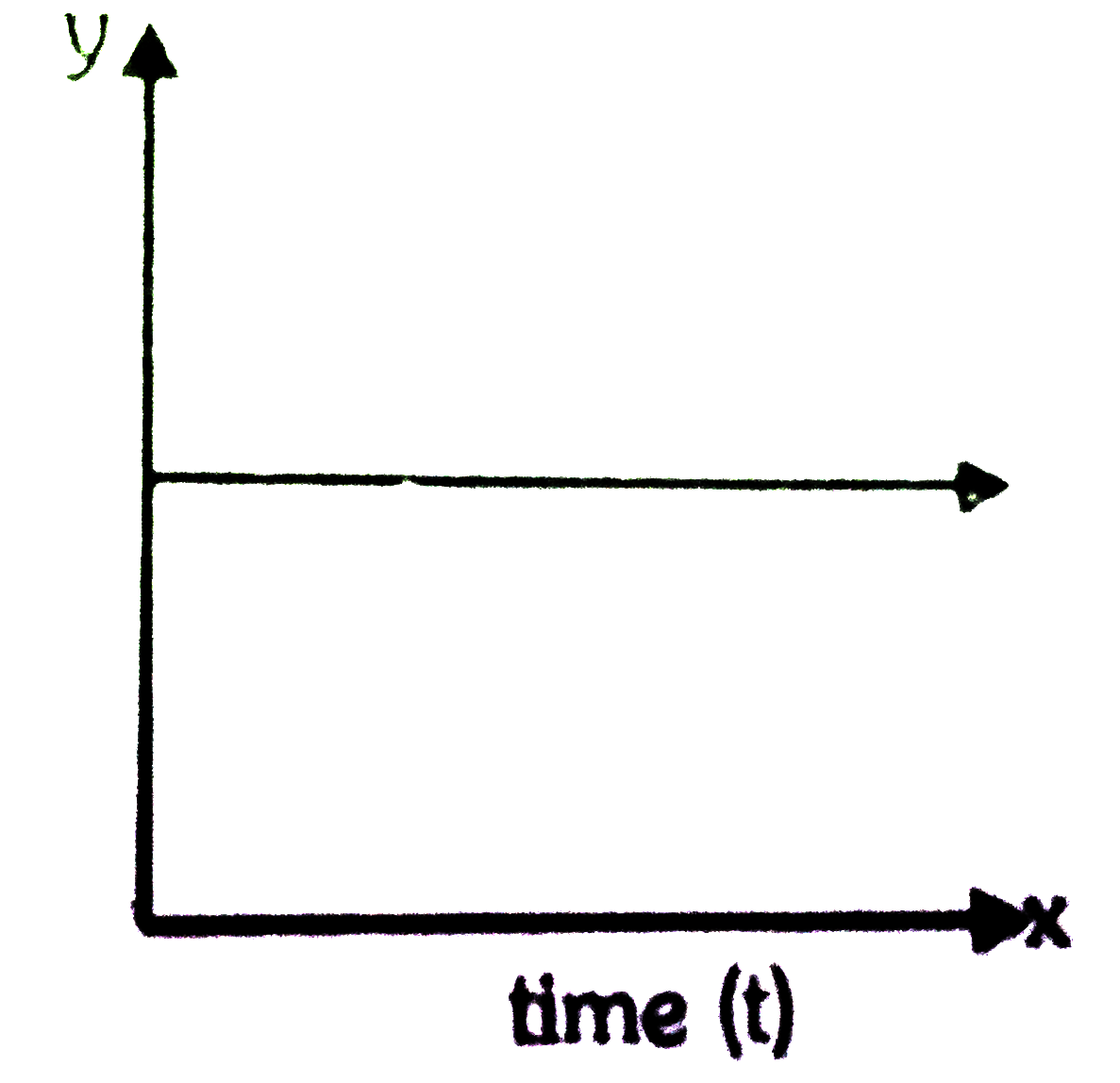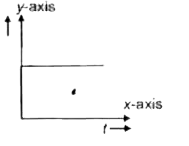Which quantity associated with the projectile motion remains constant during entire motion?
kinetic energy
momentum
horizontal velocity
vertical velocity
The correct Answer is:C
To determine which quantity associated with projectile motion remains constant throughout the entire motion, we can analyze the different quantities involved in projectile motion.
1. Identify the quantities in projectile motion:
- Kinetic Energy (KE)
- Momentum (p)
- Horizontal Velocity (Vx)
- Vertical Velocity (Vy)
2. Analyze Kinetic Energy:
- The formula for kinetic energy is given by:
KE=12mv2
- As the projectile moves upward, its speed decreases due to the acceleration caused by gravity, and at the highest point, the vertical component of velocity becomes zero. Therefore, the kinetic energy changes throughout the motion.
- Conclusion: Kinetic Energy is not constant.
3. Analyze Momentum:
- Momentum is defined as:
p=mv
- Since momentum is a vector quantity, both the magnitude and direction of velocity change during the projectile's motion (the vertical component changes while the horizontal component remains constant). Thus, the momentum also changes.
- Conclusion: Momentum is not constant.
4. Analyze Horizontal Velocity:
- The horizontal component of the initial velocity is given by:
Vx=ucos(θ)
- In the absence of horizontal forces (assuming no air resistance), the horizontal velocity remains constant throughout the motion. There is no acceleration acting in the horizontal direction.
- Conclusion: Horizontal Velocity is constant.
5. Analyze Vertical Velocity:
- The vertical component of the initial velocity is given by:
Vy=usin(θ)
- The vertical velocity changes due to the acceleration of gravity acting downward. As the projectile rises, the vertical velocity decreases, and as it falls, it increases.
- Conclusion: Vertical Velocity is not constant.
Final Answer:
The quantity that remains constant during the entire motion of a projectile is the Horizontal Velocity.
---
- Kinetic Energy (KE)
- Momentum (p)
- Horizontal Velocity (Vx)
- Vertical Velocity (Vy)
- The formula for kinetic energy is given by:
KE=12mv2
- As the projectile moves upward, its speed decreases due to the acceleration caused by gravity, and at the highest point, the vertical component of velocity becomes zero. Therefore, the kinetic energy changes throughout the motion.
- Conclusion: Kinetic Energy is not constant.
- Momentum is defined as:
p=mv
- Since momentum is a vector quantity, both the magnitude and direction of velocity change during the projectile's motion (the vertical component changes while the horizontal component remains constant). Thus, the momentum also changes.
- Conclusion: Momentum is not constant.
- The horizontal component of the initial velocity is given by:
Vx=ucos(θ)
- In the absence of horizontal forces (assuming no air resistance), the horizontal velocity remains constant throughout the motion. There is no acceleration acting in the horizontal direction.
- Conclusion: Horizontal Velocity is constant.
- The vertical component of the initial velocity is given by:
Vy=usin(θ)
- The vertical velocity changes due to the acceleration of gravity acting downward. As the projectile rises, the vertical velocity decreases, and as it falls, it increases.
- Conclusion: Vertical Velocity is not constant.
The quantity that remains constant during the entire motion of a projectile is the Horizontal Velocity.
Similar Questions
Knowledge Check
- Question 1 - Select One
In the graph shown in fig. the time is plotted along x-axis. Which quantity associated with the projectile motion is plotted along the y -axis:-
 Akinetic energyBmomentumChorizontal velocityDnone of the above
Akinetic energyBmomentumChorizontal velocityDnone of the above - Question 2 - Select One
In the graph shown in figure, which quanitity associated with projectile motion is plotted along y-axis ?
 AKinetic energyBMomentumCHorizontal velocityDNone of these
AKinetic energyBMomentumCHorizontal velocityDNone of these - Question 3 - Select One
A planet moves around the sun in an elliptical orbit with the sun at one of its foci. The physical quantity associated with the motion of the planet that remains constant with time is
AvelocityBcentripetal forceClinear momentumDangular momentum
Which of the following is constant in a projectile motion?
View SolutionWhich of the following quantities remain constant during projectile motion?
View SolutionIn a projectile motion the velocity
View SolutionThe physical quantity for which magnitude and direction remains constant in unifrom circlar motion is
View SolutionWhich of the following quantities remains constant during uniform circular motion ?
View Solution


